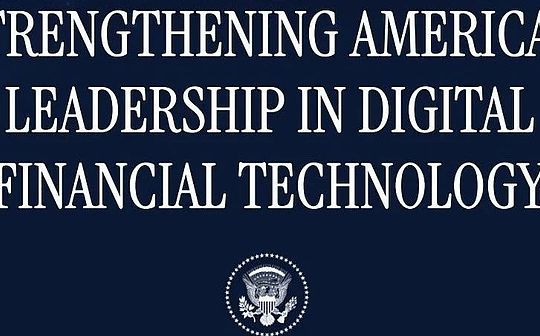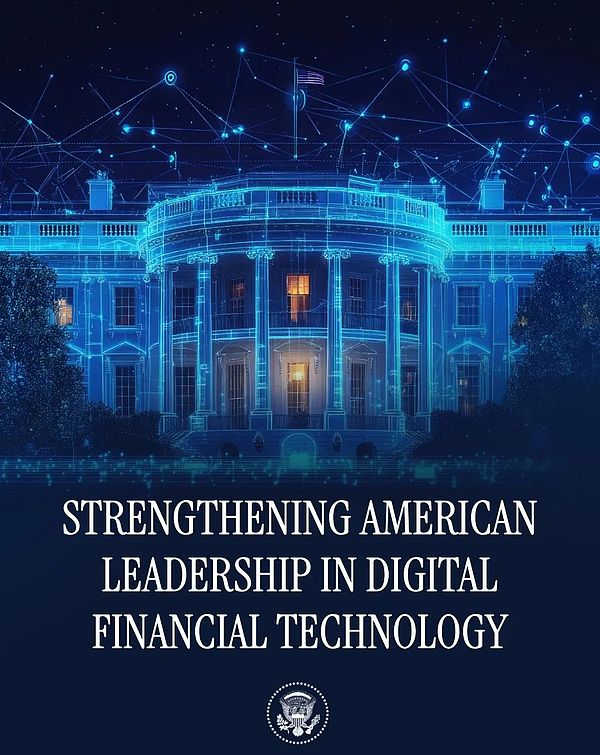
The White House has just released the “Crypto Policy Report”. Today we will interpret it:

The big background behind
The Trump administration signed a new order (EO 14178) in early 2025, requiring the reorganization of the encryption policy and a unified strategy;
This report is the result of this order, and was jointly launched by the Treasury Department, SEC, CFTC, the Federal Reserve and the White House economic team.
Key content of the report (interpretation in plain language)
1. The United States wants to be the boss in “on-chain finance”
The United States does not want to lag behind and continues to be a global leader in the field of digital finance (especially Bitcoin, stablecoins, and on-chain assets).
what to do?We must make laws and regulations clearer, innovation freer, and capital more daring.
2. Stablecoins: Allowed, but must be regulated
As long as you want to issue stablecoins that “anchored USD”, such as USDC or future commercial bank stablecoins, you must:
-
Get a license;
-
Have sufficient cash reserves;
-
Can repay in time;
-
Accepted for audit;
-
Protect consumers;
-
“Blow-blowing” is forbidden.
This part is a bit similar to the practices of Hong Kong and the EU, but it encourages private enterprises to innovate (the government does not make official stablecoins).
3. SEC and CFTC: Stop fighting and distinguish what to do
Now everyone can’t figure out which coins belong to the SEC and which ones belong to the CFTC.
The report recommends Congress to legislate legislation as soon as possible to draw the borders:
-
Securities (like stocks) belong to SEC;
-
Commodity categories (such as Bitcoin) belong to CFTC;
-
Stable coins, trading platforms, etc. establish a separate licensing mechanism.
4. Make it clear that “no”: The United States will not engage in CBDC
The White House made it clear: We will not issue central bank digital dollars (CBDC).
Why?because:
-
Invasion of privacy;
-
Give the government too much power;
-
Not in line with the “American free market spirit”.
This is the core position of the Republican Party in recent years.
5. Encrypted taxes and pensions must also be “on the chain”
The report also mentioned:
-
The IRS is about to release new guidelines to figure out:
-
How do you file taxes?
-
How do you calculate the money you make on the chain?
-
Which are “income” or “capital gains”;
-
Employers can consider allowing crypto assets to appear in retirement accounts (401k), but they must be mainstream coins that comply with security norms.
6. Building chain infrastructure: Don’t rely solely on VCs, you need state investment
The report recommends using national funds to support the following directions:
-
On-chain settlement system;
-
Government compliance tools (regulatory technology);
-
Encrypted audit;
-
Privacy technologies such as zero-knowledge proof.
There may be new “on-chain DARPA” or National Innovation Center.
7. The United States reserves Bitcoin?Not explicitly stated, but it’s implied
The report did not explicitly state “The US government wants to buy Bitcoin”.
However, the mention of “long-term stable Bitcoin policy can strengthen the diversification of national strategic assets” has triggered market interpretation: Does the government also want to hoard some?
To sum up: This report tells us
-
The United States will not ban encryption, but will standardize and institutionalize it;
-
The government does not engage in CBDC, but encourages private stablecoins;
-
Congress must pass supporting regulations as soon as possible, otherwise the SEC and CFTC will continue to scramble;
-
The United States hopes to dominate the global “crypto finance”.







